
Growing up with dogs and now working closely with them, I’ve developed a keen interest in the diversity of canine coat colors, and Pomeranian colors offer a stunning array of shades.
In this article, we’ll explore the range of colors these delightful dogs come in, from the classic oranges and creams to the rarer blues and chocolates. I’ll break down the genetics behind these colors, dispel some myths about coat color and health, and even give you some grooming tips specific to each shade. As we explore, you’ll see just how fascinating these color patterns are, and maybe even find your new favorite!
So, whether you’re a Pomeranian parent, a potential owner, or just a dog enthusiast like me, stick around.
TABLE OF CONTENTS
The History and Genetics Behind Pomeranian Colors
Starting with history, Pomeranians haven’t always been the rainbow of colors we see today. These little guys were originally larger and primarily found in shades of white, black, or cream. But as they became more popular, especially in the 18th and 19th centuries, breeders started experimenting with breeding practices, and a spectrum of colors emerged.
It’s interesting to note how preferences have shifted over the years. For instance, Queen Victoria had a small red Pomeranian, which set a trend for smaller and more vibrant-colored Poms. Today, I see Pomeranians in almost every color imaginable, showing how human preferences have shaped their evolution.
Now, let’s talk about genetics, which is like the secret recipe for their coat colors. Dog coat colors, including those of Pomeranians, are determined by various genes. The main players in this genetic game are the E, K, A, B, and D series of genes. Each of these controls different aspects of coat color, like whether a Pomeranian will be black, brown, or cream. It’s a bit like mixing paint; different combinations give you different outcomes.
For Pomeranians, specific genes have been identified that lead to their unique colors. For example, the gene that causes the orange color is dominant, so it’s more common. The rarer blue or chocolate colors result from recessive genes, making them less frequent. This genetic play isn’t just about appearance; it’s a window into the breed’s history and evolution.
Pomeranian Colors Chart
The American Kennel Club recognizes over 10 Pomeranian coat colors. Some colors like beaver and brindle are rarer than the more traditional red, orange, white, and black. You can see a complete list of all coat colors in the table below:
Different Pomeranian Coat Colors in Detail
1. Orange Pomeranian

From Adobe Stock
Orange Pomeranians, in my experience, embody the quintessential image of the breed. They’re what most people picture when they think “Pomeranian.” It’s a color that’s rich in tradition and beloved by many.
In the breeding world, we often refer to this shade as ‘clear orange’ to set it apart from the orange sable. It’s a specific tone that breeders carefully cultivate. The breeding process itself is quite fascinating. To achieve this vibrant orange, breeders typically mate a pure orange Pomeranian with a sable that carries the recessive ‘clear’ gene. This genetic dance ensures that the offspring have that unmistakable orange hue without the sable overlay.
As a puppy, an orange Pomeranian often starts with a much paler shade. It’s incredibly rewarding to watch them grow and see their coat color deepen and mature. The transformation from a soft, creamy white to a bright, vivid orange is nothing short of remarkable. Occasionally, you might find puppies that begin with a sable coat, which gradually fades, revealing the clear orange underneath.
One of the distinctive features of the orange Pomeranian is their lack of black fur. Instead, their coat is a gradient of creams and oranges, blending seamlessly from light to dark. It’s like watching an artist’s canvas come to life, each strand contributing to a beautiful whole.
Finding an orange Pomeranian isn’t a challenge; they’re quite prevalent and widely loved. This popularity is reflected in their recognition within breed standards. As someone who’s worked closely with these dogs, I can say that their appeal goes beyond color. Their spirited personality wrapped in that bright orange coat makes them irresistible.
2. Red Pomeranian

From Adobe Stock
The red Pomeranian’s coat isn’t just any red; it’s a deep, rich, rusty shade that exudes a kind of warmth and depth.
The contrast in their coat is noteworthy. You’ll often find lighter, cream fur adorning their chest, creating a beautiful, natural highlight that accentuates the deeper red of their coat. It’s this unique combination that sometimes leads to confusion with the more common orange Pomeranians, but once you’ve seen a true red, the difference is unmistakable.
In the show ring, red Pomeranians hold their own with grace. They’re not just allowed but celebrated for their vivid color. It’s always a joy to see them prancing confidently, their coats glistening in the light, showcasing that deep red that’s so characteristic of their variety.
Genetically speaking, red Pomeranians share a fascinating similarity with black Pomeranians. Both owe their distinctive coat colors to the E Locus gene. This genetic connection is a reminder of the intricate science behind their beautiful coats, a science that I find incredibly intriguing.
Among the spectrum of Pomeranian colors, red and orange are the two most popular. It’s easy to see why — these colors are not just visually striking but also full of personality.
3. White Pomeranian

From Adobe Stock
The white Pomeranian is like a little snowball of joy in the canine world. I’ve always been struck by how it captures the essence of a winter wonderland in its little frame. Their coat is pure, pristine white, without a hint of cream or any dark-colored markings.
For those who adore the look of a fluffy Samoyed but are looking for a smaller companion, the white Pomeranian is an absolute dream. Their appearance is reminiscent of a miniature version of the larger breed, with all the fluffiness and none of the size.
One fascinating aspect of the white Pomeranian is their color consistency. They are born white and maintain this snowy hue throughout their lives. It’s a rarity in the dog world, where coat colors often change as puppies mature.
The science behind their color is intriguing. White Pomeranians are white due to a lack of pigment. Unlike many dogs that have the dark melanin pigment, these little guys don’t, which contributes to their pure white coats. It’s a common misconception to think they might be albino, but that’s not the case. They’re not albino because their eyes and noses are black, not the red or pink typically associated with albinism.
4. Black Pomeranian
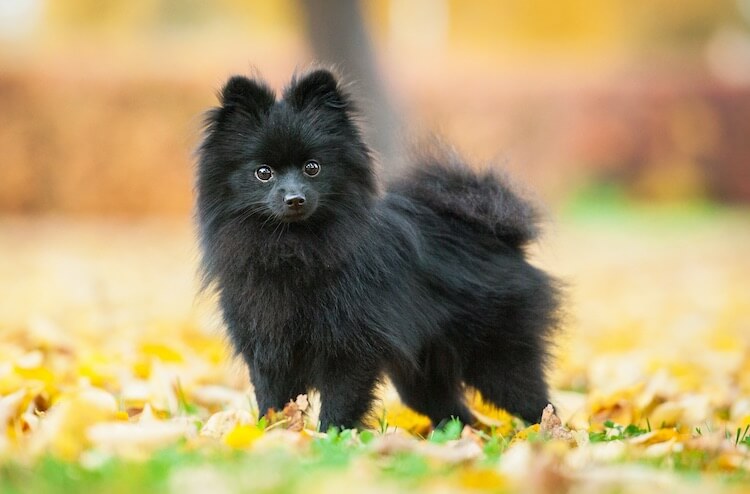
From Adobe Stock
The beauty of a black Pomeranian lies in the consistency of its color. From the tips of their ears to the ends of their fluffy tails, their fur is uniformly black. I’ve noticed that their fur has a unique way of reflecting light, giving them a sleek appearance that’s hard to miss.
As puppies, black Pomeranians are already decked out in their signature color. Watching them grow, it’s fascinating to see how they retain the intensity of this black. In a litter of Pomeranians, the black ones always catch my eye with their distinct, richly colored coats.
I find the genetics behind their coloration particularly intriguing. The solid black in these Pomeranians is due to a specific genetic combination that ensures no other color dilutes their fur. This aspect of their genetics is a remarkable example of the breed’s diversity and the intricate nature of canine genetics.
5. Merle Pomeranian

From Adobe Stock
The Merle Pomeranian is a color pattern that never ceases to amaze me. Every time I see one, it’s like looking at a unique piece of art. This pattern consists of a splattering of red set against a tan base, interspersed with patches of white. It reminds me a bit of the coat of an Australian Cattle Dog but in the adorable, compact form of a Pomeranian.
Merle Pomeranians are most commonly found in blue or red merle patterns. Each one is distinct, and their coats look like they’ve been masterfully painted.
A unique aspect of the Merle Pomeranian is their nose and paws. They often have this mottled look, a mix of pink and black, which adds to their distinct appearance. Their eyes are equally captivating, ranging in color from dark brown to an enchanting blue.
Breeding Merle Pomeranians is something that fascinates me. It typically involves mating a merle parent with a black or chocolate Pomeranian. However, it’s a process that needs to be approached with knowledge and care. I always emphasize to breeders the importance of understanding the risks associated with breeding merle dogs. A double merle, resulting from mating two merle Pomeranians, can have serious health issues like deafness or blindness. This is due to the double merle gene affecting pigment cells in crucial areas like the iris and cochlea.
6. Wolf Sable Pomeranian

From Adobe Stock
The wolf sable Pomeranian holds a special allure for me, being one of the more unique and rare colors in the breed. Often referred to as gray sable, this coloration is captivating due to its resemblance to a gray Pomeranian but with a distinct twist: the presence of black-tipped guard hairs.
In my observations, the sable coloring of the wolf sable Pomeranian gives them a distinguished look, with a black nose, eye rims, lips, and paw pads. What often catches my eye is the distribution of the darkest parts of their coat, typically concentrated on the face, back, and chest. This pattern creates a beautiful contrast, enhancing their wolf-like appearance.
One of the challenges with wolf sable Pomeranians, and something I’ve noticed over the years, is their rarity. They are often misidentified as orange sable, making it incredibly hard to find a purebred wolf sable. Despite the first one being shown way back in 1901, their rarity persists.
For those looking to ensure they have a true wolf sable Pomeranian, a color gene test is the only definitive method. This reliance on genetic testing to confirm their coloration speaks to the complexity and uniqueness of this particular shade.
In terms of health, there are no specific issues related to the wolf sable color that I’ve come across in my experience. However, their rarity does come with a price tag. Wolf sable Pomeranians can be quite expensive, often costing around $2,000, reflecting their unique status within the breed.
7. Chocolate Pomeranian

From Adobe Stock
Chocolate Pomeranians are a delightful variation within the breed, exhibiting a range of hues from milk chocolate to a deeper, dark chocolate. Each time I’ve had the chance to interact with a chocolate Pomeranian, I’m struck by the richness of their coat color. Their nose and paw pads often match their fur in the same silky brown shade, creating a harmonious and visually appealing look.
The chocolate or liver color in these dogs is a result of the B Locus gene. This gene is responsible for creating black pigment in a dog’s coat. In chocolate Pomeranians, a mutation in this gene dilutes the black pigment, resulting in the unique chocolate-colored coats that are so captivating.
Like many dogs with darker fur, chocolate Pomeranians are susceptible to color changes when exposed to direct sunlight for extended periods. The sun can redden their fur, which can obscure the beautiful chocolate hue. As someone who’s worked with a variety of dog breeds, I always advise owners to be mindful of this to maintain the rich color of their chocolate Pomeranian’s coat.
8. Blue Pomeranian
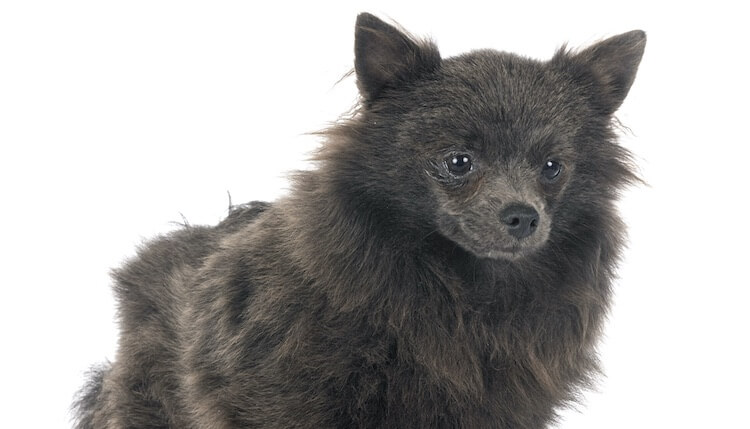
From Adobe Stock
The blue Pomeranian presents a fascinating palette of silver-gray at birth, evolving into a coat with dark gray guard hairs and captivating blue undercoats.
Breeding blue Pomeranians involves two solid-colored parents carrying the dilute gene. However, it’s important to note that blue Pomeranians, like other blue dogs, can be prone to specific health issues. They may be at risk of color dilution alopecia, a condition that can lead to hair loss and dry skin. This aspect is something I always emphasize to potential owners, as it’s essential to be aware of and prepared for any special care needs.
Despite this, a blue Pomeranian purchased from a reputable breeder can make a beautiful, loving companion. Their stunning coat and affectionate nature make them a joy to have around.
9. Cream Pomeranian

From Adobe Stock
Cream Pomeranians boast a coat that’s a soft, subtle shade, not quite white and not as intense as the oranges or reds. It’s this gentle, understated elegance that makes them so appealing to me.
From my observations, cream Pomeranians often have a uniform coloration, which can range from a very light, almost white, to a deeper, richer cream. Each cream Pomeranian brings its unique tone to the spectrum, making them all individually striking.
A notable feature of cream Pomeranians, which I always find endearing, is their soft, fluffy coat. It tends to give them a particularly cuddly appearance, reminiscent of a plush toy.
In terms of genetics, the cream color in Pomeranians is a result of a specific genetic coding that dilutes the red pigment. I often mention that cream Pomeranians, despite their light color, don’t usually have the challenges associated with white or very light-colored dogs, like skin sensitivities. They are relatively easy to maintain, with the usual grooming requirements typical of the breed.
10. Brindle Pomeranian

From Adobe Stock
Brindle fur is distinguished by its unique coat pattern, featuring streaks or stripes of color that overlay a tawny or brown base color. This pattern has a distinct, almost tiger-stripe appearance, which is something I find visually striking. You’ll also be amazed at the brindle variants of other dog breeds.
Each brindle Pomeranian I’ve encountered has had a slightly different pattern, making them unique. The stripes are usually darker than the base coat color, creating a beautiful contrast. I’ve seen brindle patterns ranging from subtle to quite pronounced, and it’s this variability that adds to their appeal.
Caring for a brindle Pomeranian is similar to caring for any other Pomeranian — their coat requires regular grooming to maintain its appearance and health.
11. Black & Tan Pomeranian

From Adobe Stock
This color variation showcases a striking black and tan pattern, which is particularly distinct. The black primarily covers their face and back, while the tan adorns their chest and legs. It’s a combination that lends them a unique, eye-catching appearance.
What stands out to me in the black and tan Pomeranians are the tan highlights. These highlights bring attention to the breed’s signature dot eyebrows, enhancing their expressive faces.
Describing a black and tan Pomeranian as adorable and feisty is spot on. Their coloration adds to their spirited personality, making them both visually appealing and full of character.
Genetically, black and tan Pomeranians share similarities with sable-colored ones, as they both carry the same recessive allele.
Their resemblance to smaller versions of larger breeds like Rottweilers or Doberman Pinschers is undeniable. This resemblance is one of the reasons they’re so appealing to many dog lovers. For those who admire the look of larger breeds but need a smaller, more apartment-friendly dog, the black and tan Pomeranian is an ideal choice.
12. Beaver Pomeranian
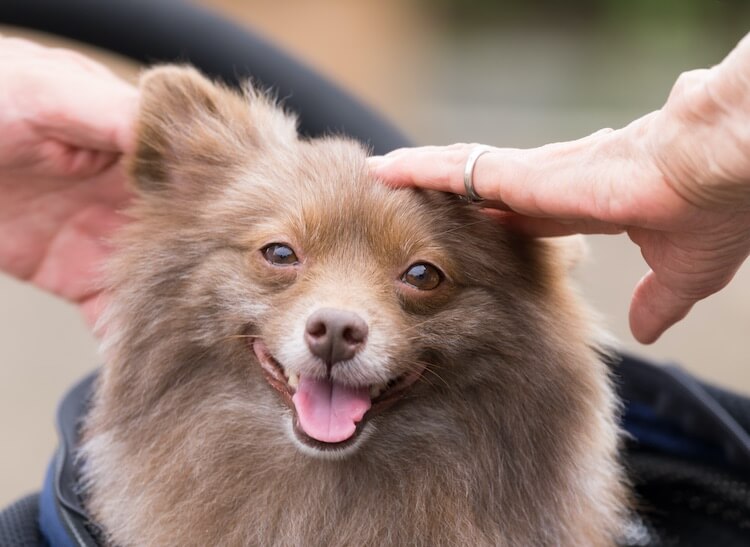
From Adobe Stock
Every beaver Pomeranian I’ve encountered has these captivating hazel eyes, which perfectly complement their light brown coat. The coat itself varies in shades, ranging from a deeper brown to a more subtle beige. This variety in shading adds to their appeal. The lighter cream color on their chest and neck provides a lovely contrast, enhancing their overall appearance.
The unique color of the beaver Pomeranian is due to a dilute gene mutation. This mutation affects the chocolate pigment in their coat, resulting in the distinctive beaver color.
However, it’s important to note that, like the blue Pomeranian, this dilute color can lead to color dilution alopecia. It’s a genetic condition that can cause hair loss and itchy, dry skin.
When considering a beaver Pomeranian, it’s crucial to ask breeders about their screening process for color dilution alopecia. Responsible breeding practices are key to ensuring the health and well-being of these dogs.
13. Tri-Colored Pomeranian

From Adobe Stock
This color scheme is an extension of the black and tan but with an added twist of white.
In my experience with tri-colored Pomeranians, the distribution of these three colors can vary greatly from one dog to another. Some of them are predominantly white, while others lean more towards a darker palette. Then some display a harmonious blend of all three colors. This variety in their coat patterns makes each tri-colored Pomeranian uniquely attractive.
One feature that consistently stands out in the tri-colored Pomeranians is the presence of two tan dot eyebrows. These markings often lend them a feisty and expressive look.
The beauty of choosing a tri-colored Pomeranian is the assurance of having a unique dog. Because every tri-colored coat presents a different ratio of black, tan, and white, no two are exactly alike. This uniqueness is something I always highlight to potential Pomeranian owners who are drawn to this variety.
Pomeranian Color Changes Over Time
When Pomeranian puppies are born, their coat color isn’t always a clear indicator of what they’ll look like as adults. This change is one of the most intriguing aspects of their development.
For instance, I’ve seen black Pomeranian puppies lighten slightly as they mature, their fur developing a more charcoal hue. This subtle shift can be quite surprising to those who aren’t familiar with the breed’s color evolution. Similarly, cream Pomeranians might start with a darker shade, almost like a light brown or beige, and then lighten to their signature cream as they grow.
One of the most dramatic changes I’ve observed is in sable Pomeranians. They often lose much of their darker fur as they age, transforming into a lighter, more uniform color. It’s a remarkable transformation and one that always catches the attention of Pomeranian enthusiasts.
Interestingly, some Pomeranians can change color due to factors other than age. Sun exposure, for example, can lighten or alter their fur’s hue. I always advise Pomeranian owners to be mindful of this, especially if they spend a lot of time outdoors.
Grooming and Care for Different Coat Colors
I know that different coat colors can sometimes require specific grooming and care approaches. In this section, we’ll explore the varied grooming needs based on the unique coat colors of Pomeranians.
Dark-Colored Coats (Black, Chocolate)
Dark-colored Pomeranians, like black and chocolate, have gorgeous, rich coats that can hide dirt and debris more easily than lighter colors. Regular brushing is crucial to prevent matting and to keep their fur shiny. I recommend using a high-quality bristle brush and occasionally, a de-shedding tool, especially during their shedding seasons. These colors also tend to show dandruff more prominently, so it’s important to use a moisturizing shampoo to keep their skin and coat hydrated. Protecting their coat from too much sun exposure is also essential, as it can cause the color to fade.
Light-Colored Coats (White, Cream)
Light-colored coats, like white and cream Pomeranians, require frequent grooming to maintain their pristine appearance. Stains from food, dirt, or tears are more visible on these coats. I find that using a gentle whitening shampoo can help remove stains and brighten their fur.
Regular brushing, at least a few times a week, is necessary to avoid tangles and mats. Additionally, it’s essential to keep the area around their eyes clean to prevent tear staining. Light-colored Pomeranians may also need more frequent baths, but it’s important to use a mild shampoo to avoid drying out their skin.
Coat Color and Health
I’ve come to understand how certain colors can be indicators of specific health issues. It’s a fascinating, though sometimes concerning, aspect of canine genetics. In this section, we’ll delve into the various health issues that are associated with different Pomeranian coat colors, exploring their symptoms and causes.
Color Dilution Alopecia
Color Dilution Alopecia is a condition I’ve seen primarily in Pomeranians with diluted coat colors, like blues and beavers. This genetic disorder affects the dog’s hair follicles, leading to hair thinning and loss, which can result in patchy coats. The skin in the affected areas can become flaky and itchy, causing discomfort to the dog. This condition arises due to a mutation in the genes responsible for diluting the coat color, making the hair weaker and prone to breakage. Regular vet check-ups and proper skin care can manage symptoms, but there’s no cure, so breeding awareness is crucial.
Double Merle Health Issues
Double Merle, a coat pattern resulting from breeding two merle-patterned Pomeranians, can lead to serious health complications. In my experience, these dogs often face hearing and vision impairments, including partial to complete deafness or blindness. They may also have increased sensitivity to sunlight and are prone to skin cancers. The symptoms and severity vary, but it’s a condition that significantly impacts the quality of life. This genetic issue is entirely preventable through responsible breeding practices, emphasizing the importance of understanding the genetics behind coat colors.
Special Care for Merle and Multi-Colored Coats
Merle and multi-colored Pomeranians, with their unique patterns, can have varied coat textures. These coats often combine different types of fur, requiring a more tailored grooming approach. I usually recommend using a combination of brushes: a slicker brush for the finer parts and a pin brush for thicker areas. Keeping an eye on the different textures within their coat is key to preventing matting in denser areas. For multi-colored coats, it’s also important to check for any skin issues, as changes in pigmentation can sometimes hide skin conditions.
FAQs on Pomeranian Colors
What are the most common Pomeranian coat colors?
The most common Pomeranian coat colors include orange, black, cream, white, and sable. Orange is traditionally seen as the signature color of the breed, but black and white Pomeranians are also quite popular. Cream and sable varieties offer a beautiful range of shades, from light to more pronounced hues.
Can a Pomeranian’s coat color change over time?
Yes, a Pomeranian’s coat color can change as they grow from a puppy to an adult. For instance, sable Pomeranians often lighten over time, and black puppies may develop into a charcoal shade. It’s one of the fascinating aspects of the breed, making each dog’s growth journey unique.
Are certain coat colors associated with health issues in Pomeranians?
Indeed, some coat colors in Pomeranians are linked to specific health conditions. For example, blue and beaver Pomeranians can be prone to color dilution alopecia, leading to hair loss and skin issues. Additionally, double merle Pomeranians, identified by their unique coat pattern, may face serious health challenges like deafness or blindness.
Do different coat colors require different grooming routines?
Different coat colors in Pomeranians can require slightly varied grooming routines. Lighter colors like white and cream may need more frequent grooming to prevent stains, while darker colors like black and chocolate require regular brushing to maintain their shine and prevent matting. Each coat color may have specific needs in terms of brushing and bathing frequency.
How does coat color impact the selection of a Pomeranian?
While coat color might initially attract potential owners, it’s important to consider factors like the dog’s personality, health, and grooming needs over color. However, personal preference does play a role, and it’s okay to have a color preference as long as it’s balanced with these other important considerations.
Choosing a Pomeranian: Does Coat Color Matter?
When selecting a Pomeranian, it’s understandable to be drawn to a specific coat color. However, in my experience, several other factors are far more critical in the long term. Firstly, personality should be a primary consideration. Pomeranians are known for their lively and affectionate nature, but individual temperaments vary. Finding a dog that matches your lifestyle and energy level is more important than coat color.
Secondly, the health of the Pomeranian is paramount. Some coat colors are associated with specific health issues, so it’s essential to prioritize the overall health and genetics of the dog. Also, consider the grooming requirements, as different colors might need varying levels of care.
Moreover, be mindful of the availability of certain colors and the practices of breeders. Rare colors can sometimes encourage unethical breeding practices, so always opt for reputable breeders who focus on the health and well-being of their dogs.
Ultimately, while personal preference for a coat color is natural, it should be balanced with these vital considerations. Remember, the joy and companionship a Pomeranian brings go far beyond their coat color.








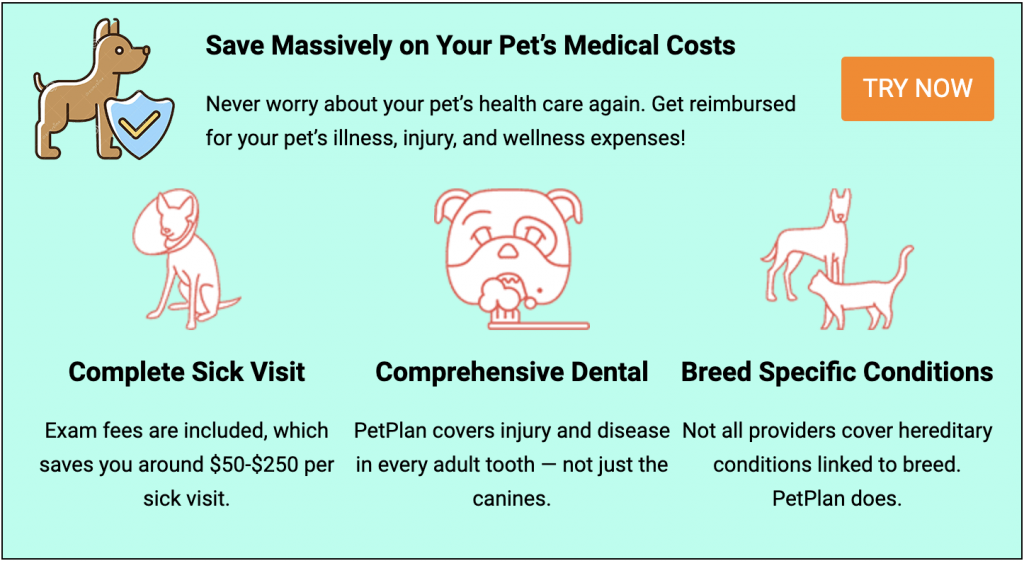
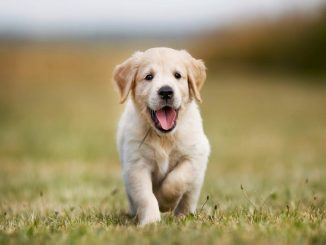


IMHO, Pomeranians are the world’s most perfect dog.
I believe in dog!
I love this kind of dog.
My niece chicky loves it.